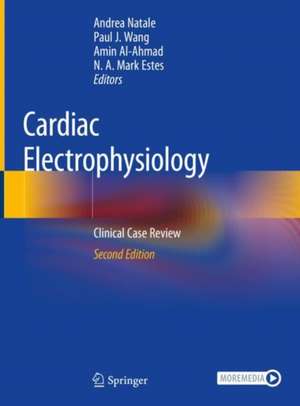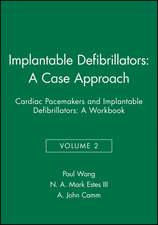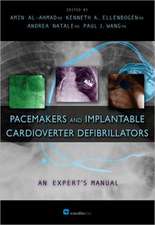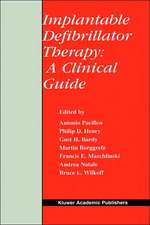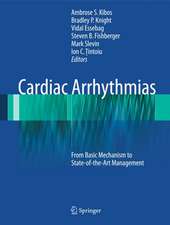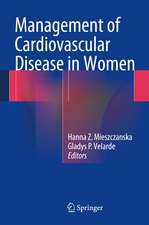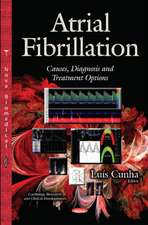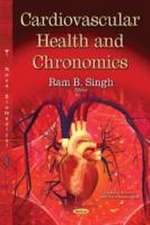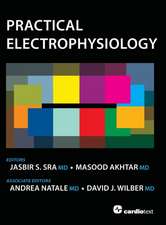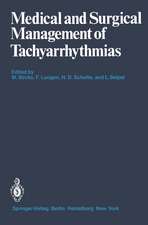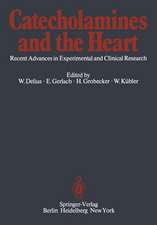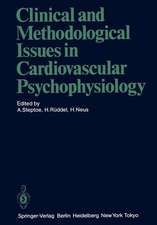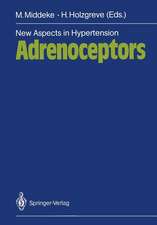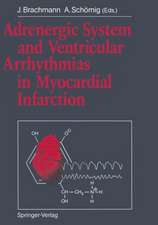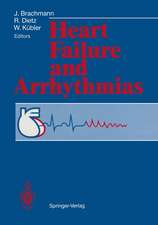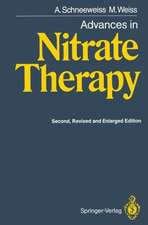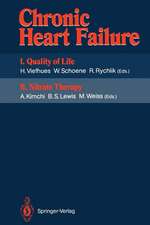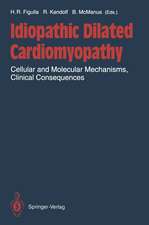Cardiac Electrophysiology: Clinical Case Review
Editat de Andrea Natale, Paul J. Wang, Amin Al-Ahmad, N. A. Mark Estesen Limba Engleză Hardback – 9 iun 2020
While there are many outstanding resources providing in-depth review of electrophysiology topics, this extensively updated book is one of the few case-based books that comprehensively cover clinical electrophysiology, devices and ablation. Case review offers a simple, yet effective way in teaching important concepts, offering insight into both the basic pathophysiology of a problem as well as the clinical reasoning that leads to a solution. As the field of cardiac electrophysiology evolves, the challenge remains to educate new generations of cardiac electrophysiologists with the basics as well as the latest advances in the field.
Cardiac Electrophysiology: Clinical Case Review collates the most comprehensive case-based reviews of electrophysiology designed to appeal to all students of the field whether they are fellows, allied professionals or practicing electrophysiologists. The Editors have recruited some of the true experts in the field to contribute cases that they have encountered and summarizing the important learning objectives in a succinct way. Covering clinical electrophysiology, device troubleshooting and analysis as well as intracardiac electrogram analysis and ablation, readers will find the cases useful as a review of electrophysiology or in their day to day interactions with patients.
Preț: 1174.04 lei
Preț vechi: 1235.83 lei
-5% Nou
Puncte Express: 1761
Preț estimativ în valută:
224.65€ • 234.55$ • 185.93£
224.65€ • 234.55$ • 185.93£
Carte disponibilă
Livrare economică 14-28 martie
Preluare comenzi: 021 569.72.76
Specificații
ISBN-13: 9783030285319
ISBN-10: 3030285316
Pagini: 714
Ilustrații: XXX, 714 p. 458 illus., 345 illus. in color.
Dimensiuni: 210 x 279 mm
Greutate: 2.4 kg
Ediția:2nd ed. 2020
Editura: Springer International Publishing
Colecția Springer
Locul publicării:Cham, Switzerland
ISBN-10: 3030285316
Pagini: 714
Ilustrații: XXX, 714 p. 458 illus., 345 illus. in color.
Dimensiuni: 210 x 279 mm
Greutate: 2.4 kg
Ediția:2nd ed. 2020
Editura: Springer International Publishing
Colecția Springer
Locul publicării:Cham, Switzerland
Cuprins
Dedication.- Preface.- Contributors.- Section 1: Clinical Cases: Ventricular Arrhythmias.- Case 1: Ablation of Ventricular Tachycardia Using a Non-Ventricular Site.- Case 2 When ICD Lead Failure Complicates Ventricular Arrhythmias Treatment.- Case 3: Ventricular Tachycardia in a Patient with Mitral Valve Prolaps.- Case 4: Where is the Narrow Passage?.- Case 5: Interfascicular Reentrant Ventricular Tachycardia .- Case 6: Premature Ventricular Complexes from Pulmonary Artery.- Case 7: Narrow QRS Complex Ventricular Tachycardia.- Case 8: Limitations of Wide Complex Tachycardia Algorithms in a Patient with Ischemic Cardiomyopathy.- Case 9: Right Ventricular Dysfunction and Ventricular Arrhythmias: Challenges in Diagnosis.- Case 10: The Management of Electrical Storm in a Patient with Non-Ischemic Cardiomyopathy.- Section 2: Clinical Cases: Syncope.- Case 11: QT Prolongation as a Substrate for Syncope.- Case 12: His Bundle Pacing.- Case 13: Taking a Pause to Consider Arrhythmic Etiologies of Syncope.- Case 14: Right Ventricular Outflow Tract Ventricular Tachycardia and Syncope.- Case 15: An 84-Year-Old Woman with Syncope and Orthostatic Dizziness.- Case 16: A 78-Year-Old Woman with Chest Pain and Syncope.- Case 17: A 63-Year-Old Man with Atrial Fibrillation and Syncope.- Case 18: Tetralogy of Fallot Going Too Fast.- Case 19: Swallow (Deglutition) Syncope and Carotid Sinus Hypersensitivity.- Case 20: Syncope and Bundle Branch Block.- Section 3: Clinical Cases: Hypertrophic Cardiomyopathy.- Case 21: Sudden Cardiac Death in Apical Hypertrophic Cardiomyopathy.- Case 22: Is Permanent Pacing Indicated for this ECG Finding Following Alcohol Septal Ablation?.- Case 23: Recurrent ICD Discharges in a Patient with Obstructive Hypertrophic Cardiomyopathy and High Gradients.- Case 24: Genetic Tailoring of Electrophysiological Management in Hypertrophic Cardiomyopathy.- Case 25: Apical Aneurysm: An Important Consideration in Hypertrophic Cardiomyopathy Patients.- Case 26: Management of Atrial Fibrillation in Hypertrophic Cardiomyopathy.- Case 27: Management Implications of Hypertrophic Cardiomyopathy Patients with Massive Hypertrophy.- Section 4: Clinical Cases: Athletes and Arrhythmias.- Case 28: An Athlete with Atrial Fibrillation.- Case 29: Interpretation of the 12-Lead Electrocardiogram in a Young Athlete.- Case 30: An Athlete with Arrhythmic Mitral Valve Prolapse.- Case 31: Sudden Cardiac Death with Fibrosis of the Conduction System: Should Genetic Testing of the Family Be Performed?.- Case 32: Hypertrophic Cardiomyopathy in a Young Athlete at Risk for Sudden Cardiac Death.- Case 33: An Athlete with Cardiac Arrest.- Case 34: Supraventricular Tachyarrhythmia Management in Elite Athletes.- Case 35: Broad-Complex Tachycardia in a Young Athlete.- Case 36: Sudden Cardiac Arrest in a Young Competitive Athlete.- Section 5: Clinical Cases: Atrial Fibrillation.- Case 37: Entrainment and Its Value in Arrhythmia Diagnosis.- Case 38: Unexplained Atrial Myopathy and Sick Sinus Syndrome in a Young Patient with Atrial Fibrillation.- Case 39: Post-Arterial Flutter Ablation Atrial Flutter: What Is the Mechanism?.- Case 40: Confirmation of Pulmonary Vein Isolation after Cryoablation of Atrial Fibrillation.- Case 41: Electrogram Signatures in Atypical Arial Flutters Using High Density Multipolar Catheter Mapping in a Post-Heart Transplant Patient.- Case 42: Atypical Atrial Flutter.- Case 43: Understanding the Anatomy of the Cavo-Tricuspid Isthmus to Troubleshoot a Challenging Atrial Flutter Ablation.- Case 44: Left Atrial Microrentrant Flutter.- Case 45: Left Atrial Posterior Wall Isolation.- Case 46: Left Atrial Flutter after Surgical MAZE.- Section 6: Clinical Cases: Arrhythmias—Genetic Abnormalities.- Case 47: Listen to your Patient and Act on the Triggers.- Case 48: Progressive Conduction System Disease in an Apparently Healthy Man.- Case 49: Ventricular Tachycardia in a Patient with Neuromuscular Disease.- Case 50: Atrial Tachycardia in a Patient with Congenital Heart Disease.- Case 51: Comprehensive and Systematic Evaluation following Unexplained Cardiac Arrest.- Case 52: Long QT Syndrome.- Care 53: Can Right Ventricular Outlow Tract Monomorphic Ventricular Tachycardia Be Associated with Brugada Syndrome?.- Section 7: Ablation Cases: Supraventricular Tachycardia.- Case 54: Typical Atrioventricular Nodal Reentry Tachycardia.- Case 55: Atrioventricular Nodal Reentrant Tachycardia.- Case 56: Atrioventricular Nodal Reentrant Tachycardia.- Case 57: Typical Atrioventricular Nodal Reentrant Tachycardia.- Case 58: Atrioventricular Nodal Reentrant Tachycardia.- Case 59: Supraventricular Tachycardia or Ventricular Tachycardia.- Case 60: Difficult Ablation for Atrioventricular Nodal Reentrant Tachycardia.- Case 61: Atrioventricular Reentrant Tachycardia.- Case 62: Atrioventricular Reentrant Tachycardia.- Case 63: Atrioventricular Reentrant Tachycardia.- Case 64: Epicardial Wolff-Parkinson-White Syndrome.- Case 65: Wolff-Parkinson-White Syndrome.- Case 66: An Unusual Accessory Pathway.- Case 67: Slowly Conducting Accessory Pathway.- Case 68: Atrial Tachycardia.- Case 69: Focal Atrial Tachycardia from the Non-Coronary Cusp.- Case 70: Atrial Tachycardia.- Case 71: Atrial Tachycardia.- Section 8: Ablation Cases: Atrial Fibrillation and Flutter.- Case 72: Clockwise Atrial Flutter.- Case 73: Atypical Atrial Flutter.- Case 74: Microreentry Atrial Tachycardia Post MAZE.- Case 75: Atrial Flutter.- Case 76: Atypical Flutter: Peri-Mitral Flutter.- Case 77: Atypical Micro-Reentrant Flutter Focus in Post PVAI Ablation for Persistent AF.- Case 78: Post-MAZE Atrial Tachycardia.- Case 79: Atypical Flutter from LAA Post PVAI Ablation for Persistent AF.- Case 80: Atrial Flutter Post Atrial Septal Defect Repair.- Case 81: Atypical Flutter: Left Atrial Roof Dependent Flutter.- Case 82: Persistent Left Superior Vena Cava and Atrial Fibrillation.- Case 83: Atrial Tachycardia from Left Atrial Appendage.- Case 84: Septal Atrial Premature Contraction Induced Atrial Fibrillation.- Case 85: Importance of Discrete Anatomical Structures During Paroxysmal Atrial Fibrillation Ablation.- Case 86: Comprehensive Ablation of Persistent AF.- Section 9: Ablation Cases: Ventricular Arrhythmias.- Case 87: Premature Ventricular Contractions: Lessons Learned.- Case 88: Papillary Premature Ventricular Contractions.- Case 89: Right Ventricular Outflow Tract Premature Ventricular Contraction Mapping.- Case 90: Idiopathic Premature Ventricular Contraction Ablation.- Case 91: Premature Ventricular Contraction Arising from the Left Ventricular Summit.- Case 92: Direct Monitoring of the Local Electrograms in the Left Ventricular Summit to Guide Ablation of Ventricular Arrhythmias.- Case 93: Premature Ventricular Contractions: Left Ventricular Summit.- Case 94: Premature Ventricular Contraction from the Left Ventricular Summit.- Case 95: Summit Premature Ventricular Contractions.- Case 96: Premature Ventricular Contractions: Papillary Muscles.- Case 97: Premature Ventricular Contraction from Right-Left Coronary Cusp Commissure.- Case 98: Premature Ventricular Contractions: Left Ventricular Outflow Tract.- Case 99: Upper Septal Fascicular Ventricular Tachycardia.- Case 100: Bad Peripartum Fascicular Ventricular Tachycardia.- Case 101: A Case of Tachycardia Transformation between Narrow and Wide QRS Complex.- Case 102: The Use of the N+1 Difference in Entrainment Mapping of Ventricular Tachycardia.- Case 103: Purkinje-Related Arrhythmias in Post-Infarction Cardiomyopathy.- Case 104: Ischemic Ventricular Tachycardia.- Case 105: Ischemic Cardiomyopathy: Simultaneous Epicardial and Endocardial Mapping and Ablation.- Case 106: Substrate Mapping and Ablation for Ventricular Tachycardia: The LAVA Approach.- Case 107: Incessant Ventricular Tachycardia Causing Tachycardia-Induced Cardiomyopathy and Left Atrial Appendage Thrombus.- Case 108: Ischemic Ventricular Tachycardia.- Case 109: Identification of the Ventricular Tachycardia Isthmus after Infarction by Pacemapping.- Case 110: Utilization of Isochronal Late Activation Mapping to Minimize Ablation Lesion Set in a Patient with Diffuse Epicardial Scar from Non-Ischemic Cardiomyopathy.- Case 111: Ventricular Tachycardia in Non-Ischemic Cardiomyopathy.- Case 112: Epicardial Ventricular Tachycardia: Simultaneous Epicardial and Endocardial Mapping and Ablation.- Case 113: Idiopathic Dilated Cardiomyopathy Ventricular Tachycardia.- Case 114: Nonischemic Cardiomyopathy: Simultaneous Epicardial and Endocardial Mapping and Ablation.- Case 115: Surgical Ventricular Tachycardia Ablation in Arrhythmogenic Right Ventricular Cardiomyopathy after Previous Hemopericardium.- Case 116: Right Ventricular Outflow Tract/Arrhythmogenic Right Ventricular Cardiomyopathy Ventricular Tachycardia.- Case 117: Arrhythmogenic Right Ventricular Cardiomyopathy.- Case 118: Chagas Disease Ventricular Tachycardia Ablated Using Electro-Anatomical Mapping.- Case 119: Chagas Disease Ventricular Tachycardia Ablation without Electro-Anatomical Mapping.- Case 120: Sarcoid Ventricular Tachycardia.- Case 121: Ventricular Tachycardia in a Patient with Right Bundle Branch Block.- Case 122: Ventricular Tachycardia in Sarcoidosis.- Case 123: Sarcoid Ventricular Tachycardia.- Case 124: Premature Ventricular Contractions in Giant Cell Myocarditis.- Case 125: Brugada Syndrome Ablation.- Case 126: Early Repolarization Syndrome During Local Heart or Full Body Hypothermia.- Section 10: Devices Cases.- Case 127: Repetitive Nonreentrant Ventriculoatrial Synchrony.- Case 128: Leadless Pacing for Superior Vena Cava Occlusion.- Case 129: VVI at Elective Replacement Indicator.- Case 130: Implantable Cardioverter Defibrillator Shocks While Walking Around the Shopping Mall.- Case 131: Feeling Poorly after an Upgrade to a Cardiac Resynchronization Therapy Device.- Case 132: A Nine Beat Run of Ventricular Tachycardia that Saved a Life.- Case 133: Failure of LV Lead Placement for Biventricular Pacing-His Bundle Pacing for Cardiac Resynchronization Therapy.- Case 134: Atrial Oversensing and Optimizing His Bundle Lead Position.- Case 135: Resynchronization for Cardiomyopathy with Right Bundle Branch Block Pattern.- Case 136: Shared Decision Making for an MRI Centered Lead Management Case.- Case 137: Management of a Possibly Infected Cardiovascular Implantable Electronic Device System.- Case 138: Lead Addition in a Patient with Bilateral Subclavian Vein Occlusion.- Case 139: Cardiac Resynchronization Therapy Selection in a Patient with Nonischemic Heart Failure.- Case 140: Cardiac Resynchronization Therapy Selection in a Patient with Coronary Artery Disease.- Case 141: Cardiac Resynchronization Therapy Selection in a Patient with Non Left Bundle Branch Block.- Case 142: Post-Operative Atrioventricular Block: Using Device Algorithms.- Case 143: Unusual Presentation of Pacemaker Syndrome.- Case 144: Electromagnetic Interference and Device Programming.- Case 145: Why Did the Patient Receive Therapy in the Shock Zone?.- Case 146: Subcutaneous Implantable Cardioverter Defibrillator Therapy Two Days Post Implant.- Case 147: Subcutaneous Implantable Cardioverter Defibrillator Therapy with a Left Ventricular Assist Device.- Case 148: Palpitations after Pacemaker Implant.- Case 149: Fatigue after Pacemaker Implant.- Case 150: Telemetry Tracing after Pacemaker Implant.- Case 151: Making Sense of Oversensing.- Case 152: Fatigue and Dyspnea after Pacemaker Implant.- Case 153: VT Clusters on a Single Day.- Case 154: Ignoring the Atrial Electrogram.- Case 155: Atrial Pacing above the LRL.- Case 156: Cardiovascular Implantable Electronic Device Detected Atrial Fibrillation.- Case 157: Burst Pacing of an Arrhythmia.- Case 158: Heart Failure with RV Pacing.- Case 159: Single or Dual Tachycardia?.- Case 160: Antitachycardia Pacing Termination of Tachycardia.- Case 161: Shock After Arrhythmia Termination.- Case 162: Noise on RV Lead.- Case 163: Railroad Tracking.- Case 164: Multiple Ventricular Tachycardia/Ventricular Fibrillation Episodes.- Case 165: Remote Transmission after a Shock.- Case 166: Shock Termination of Tachycardia.- Case 167: Six Shocks without Premonitory Symptoms.- Case 168: A Shocking Handshake.- Case 169: Pacing Related Proarrhythmia.- Case 170: Postmortem Implantable Cardioverter Defibrillator Interrogation.- Case 171: Pacing Failure, Ventricular Tachycardia, and Implantable Cardioverter Defibrillator Shocks.- Case 172: Fluctuations of High Voltage Impedance.- Case 173: Misdiagnosis of Ventricular Tachycardia as Supraventricular Tachycardia.- Case 174: Implantable Cardioverter Defibrillator Shock: What Is the Trigger?Case 175: Antitachycardia Pacing Termination of Tachycardia: What Is the Mechanism?.- Case 176: Loss of Left Ventricular Pacing After Cardiac Resynchronization Therapy: What Is the Cause?.- Index.
Notă biografică
Dr. Andrea Natale is Board Certified in Internal Medicine, Cardiovascular Disease, and Cardiac Electrophysiology. Dr. Natale completed medical school at the Unversita' degli Studi di France, School of Medicine and Surgery, Firenze, Italy. Dr. Natale later completed his Fellowship in several things such as Cardiology and Cardiac Electrophysiology at the University of Western Ontario. He pioneered a circumferential ultrasound vein-ablation system to correct atrial fibrillation. He also developed some of the current catheter-based cure strategies for atrial fibrillation, and was the first electrophysiologist in the USA to perform percutaneous epicardial radiofrequency ablation. He has authored milestone papers on pivotal projects, such as PABA and RAAFT.
Dr. Paul J. Wang is the Director of the Stanford Cardiac Arrhythmia Service and Professor of Medicine and of Bioengineering (by courtesy). Dr. Wang is an expert in the treatment of cardiac arrhythmias, including atrial fibrillation, atrial flutter, ventricular arrhythmias, supraventricular arrhythmias, and sudden cardiac death. He serves as Editor-in-Chief of Circulation: Arrhythmia and Electrophysiology. He was a co-inventor of catheter cryoablation, which has been used to treat over 500,000 patients with atrial fibrillation, and has pioneered new techniques in the management of heart rhythm problems, resulting in 20 issued patents. He is Recipient of the 2017 American Heart Association Clinical Cardiology Council Distinguished Achievement Award.
Dr. N. A. Mark Estes is Professor of Medicine at the University of Pittsburgh School of Medicine and the Heart and Vascular Institute at UPMC. He trained in medicine, cardiovascular disease and clinical cardiac electrophysiology at New England Deaconess Hospital, Tufts Medical Center, and Massachusetts General Hospital respectively and is ABIM certified in all three. He is the Past-President of HRS, Past-Chair of the Council on Clinical Cardiology of the AHA and current Chair of the Scientific Publishing Committee of the AHA. He has over 500 publications related to his areas of interest in clinical electrophysiology, prediction and prevention on sudden cardiac death, atrial fibrillation, and cardiovascular disease in the athlete.
Textul de pe ultima copertă
While there are many outstanding resources providing in-depth review of electrophysiology topics, this extensively updated book is one of the few case-based books that comprehensively cover clinical electrophysiology, devices and ablation. Case review offers a simple, yet effective way in teaching important concepts, offering insight into both the basic pathophysiology of a problem as well as the clinical reasoning that leads to a solution. As the field of cardiac electrophysiology evolves, the challenge remains to educate new generations of cardiac electrophysiologists with the basics as well as the latest advances in the field.
Cardiac Electrophysiology: Clinical Case Review collates the most comprehensive case-based reviews of electrophysiology designed to appeal to all students of the field whether they are fellows, allied professionals or practicing electrophysiologists. The Editors have recruited some of the true experts in the field to contribute cases that they have encountered and summarizing the important learning objectives in a succinct way. Covering clinical electrophysiology, device troubleshooting and analysis as well as intracardiac electrogram analysis and ablation, readers will find the cases useful as a review of electrophysiology or in their day to day interactions with patients.
Cardiac Electrophysiology: Clinical Case Review collates the most comprehensive case-based reviews of electrophysiology designed to appeal to all students of the field whether they are fellows, allied professionals or practicing electrophysiologists. The Editors have recruited some of the true experts in the field to contribute cases that they have encountered and summarizing the important learning objectives in a succinct way. Covering clinical electrophysiology, device troubleshooting and analysis as well as intracardiac electrogram analysis and ablation, readers will find the cases useful as a review of electrophysiology or in their day to day interactions with patients.
Caracteristici
Provides comprehensive case-based reviews of electrophysiology
Details how to interpret intracardiac electrograms
Covers elements of both basic pathophysiology and clinical reasoning in a range of cases
Details how to interpret intracardiac electrograms
Covers elements of both basic pathophysiology and clinical reasoning in a range of cases
